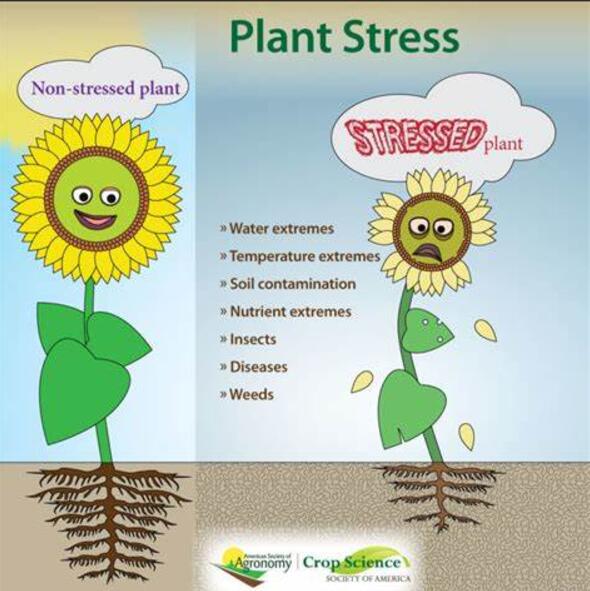Elucidation of fruit cracking mechanism in bael [Aegle marmelos (L.) Correa.] using physico-biochemical and de novo transcriptomic approaches
IF 6.8
Q1 PLANT SCIENCES
引用次数: 0
Abstract
Fruit cracking in Bael [Aegle marmelos (L) Correa.] is a major physiological disorder which is influenced by factors like water stress, nutrient deficiency, and environmental conditions. This study aimed to identify key biochemical constituents, genes, and pathways affecting fruit cracking using physical, biochemical, and transcriptomic analyses. Bael genotypes were categorized into three groups based on cracking incidence as tolerant (0 % cracking), moderately tolerant (>0–30 % cracking), and susceptible (>30 % cracking). Three genotypes from each category were selected for further analysis. Biochemical profiling revealed that total flavonoids, antioxidants, vanillic acid and soluble carbohydrates were predominant in the cracking-susceptible genotypes, while calcium and boron levels were significantly lower in these genotypes. Transcriptomic analysis using susceptible (Pant Aparna) and tolerant genotypes (ICAR-RCER 8–5) identified differentially expressed genes (DEGs) associated with cell wall and polysaccharide metabolism, phenolics and flavonoid biosynthesis, plant hormone biosynthesis and signaling, nutrient transport. Interestingly, aquaporin-encoding genes were found significantly upregulated in the cracking stage, while genes involved in MAPK signaling showed higher expression in the susceptible genotype. These transcriptomic changes were corroborated by biochemical findings, reinforcing their role in bael fruit cracking susceptibility. The insights gained from this study provide a foundation for developing cracking-tolerant bael cultivars and formulating management strategies to mitigate fruit cracking in bael.
蜜橘果裂机理的研究[l]科雷亚。]使用物理生化和从头转录组学方法
Bael [Aegle melmelos (L) Correa)的果实开裂。]是一种主要的生理失调,受水分胁迫、营养缺乏和环境条件等因素的影响。本研究旨在通过物理、生化和转录组学分析,鉴定影响果实开裂的关键生化成分、基因和途径。Bael基因型根据开裂发生率分为耐受性(0%开裂)、中度耐受性(>;0 - 30%开裂)和易感性(>; 30%开裂)三组。从每个类别中选择3个基因型进行进一步分析。生化分析结果显示,裂化易感基因型中总黄酮、抗氧化剂、香草酸和可溶性碳水化合物含量显著高于裂化易感基因型,而钙和硼含量显著低于裂化易感基因型。利用易感基因型(Pant Aparna)和耐受性基因型(ICAR-RCER 8-5)进行转录组学分析,鉴定出与细胞壁和多糖代谢、酚类物质和类黄酮生物合成、植物激素生物合成和信号转导、营养物质运输相关的差异表达基因(DEGs)。有趣的是,水通道蛋白编码基因在裂化阶段被发现显著上调,而与MAPK信号相关的基因在易感基因型中表达更高。这些转录组变化得到了生化结果的证实,强化了它们在bael果实开裂敏感性中的作用。研究结果为培育耐裂葡萄品种和制定防治葡萄果裂的管理策略提供了依据。
本文章由计算机程序翻译,如有差异,请以英文原文为准。
求助全文
约1分钟内获得全文
求助全文
来源期刊

Plant Stress
PLANT SCIENCES-
CiteScore
5.20
自引率
8.00%
发文量
76
审稿时长
63 days
期刊介绍:
The journal Plant Stress deals with plant (or other photoautotrophs, such as algae, cyanobacteria and lichens) responses to abiotic and biotic stress factors that can result in limited growth and productivity. Such responses can be analyzed and described at a physiological, biochemical and molecular level. Experimental approaches/technologies aiming to improve growth and productivity with a potential for downstream validation under stress conditions will also be considered. Both fundamental and applied research manuscripts are welcome, provided that clear mechanistic hypotheses are made and descriptive approaches are avoided. In addition, high-quality review articles will also be considered, provided they follow a critical approach and stimulate thought for future research avenues.
Plant Stress welcomes high-quality manuscripts related (but not limited) to interactions between plants and:
Lack of water (drought) and excess (flooding),
Salinity stress,
Elevated temperature and/or low temperature (chilling and freezing),
Hypoxia and/or anoxia,
Mineral nutrient excess and/or deficiency,
Heavy metals and/or metalloids,
Plant priming (chemical, biological, physiological, nanomaterial, biostimulant) approaches for improved stress protection,
Viral, phytoplasma, bacterial and fungal plant-pathogen interactions.
The journal welcomes basic and applied research articles, as well as review articles and short communications. All submitted manuscripts will be subject to a thorough peer-reviewing process.
 求助内容:
求助内容: 应助结果提醒方式:
应助结果提醒方式:


